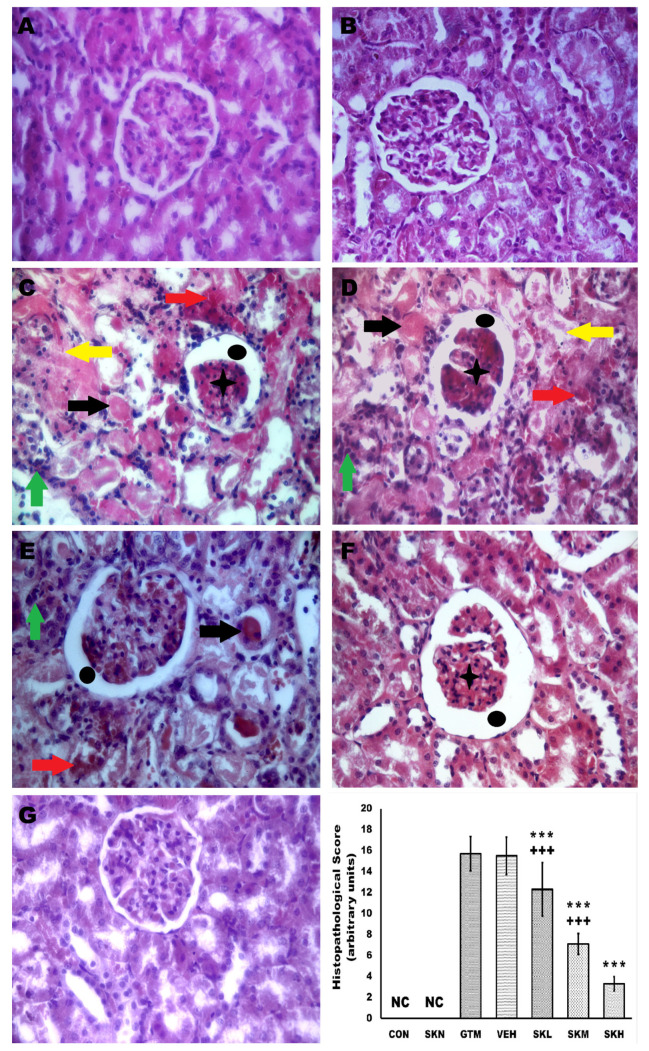Figure 7.
Shikonin demotes the renal tissue’s histopathologic changes and histopathological score in gentamicin-induced renal injury. (A,B) The CON and SKN groups’ renal tissue demonstrated an intact renal morphology with normal renal corpuscles and tubules. (C,D) GTM, and VEH groups showed that gentamicin administration caused tubular necrosis, cast formation, leukocytic infiltration, Bowman’s capsule space widening, congested glomerular and interstitial blood capillaries, and a significant rise in the histopathological score as compared to the CON group. (E–G) Renal injury-induced rats, which were orally treated with 6.25, 12.5, and 25 mg/kg/day, respectively, showed that shikonin administration dose-dependently and significantly conserved renal architecture and reduced these pathologic alterations compared to the GTM group, to be like the CON group in the SKH group. Yellow arrow, tubular necrosis, black arrow, cast formation, green arrow, leukocytic infiltration, black circle, Bowman’s capsule space widening, black asterisk, congested glomeruli, and red arrow, congested interstitial blood capillaries, *** p < 0.001 (vs. GTM group), and +++ p < 0.001 (vs. SKH group) (H&E, X400).

